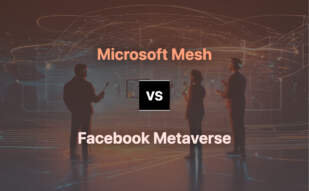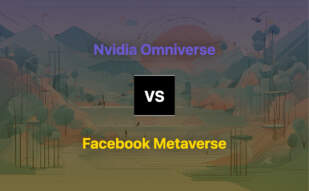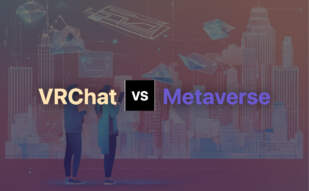Facebook Metaverse is Meta’s venture into the virtual reality space, offering a platform for social interaction, work, play, and shopping. Mark Zuckerberg aims to revolutionize social connections beyond mobile internet, with Horizon Worlds, Horizon Workrooms, and Horizon Venues as key features. Coined from the novel “Snow Crash,” the metaverse encompasses diverse worlds, accessible through VR headsets, AR gear, mobile apps, gaming consoles, and computers. Meta’s investment plans aim to onboard one billion users by 2031.

For those venturing beyond Facebook Metaverse, consider exploring alternatives such as Microsoft Mesh, Nvidia Omniverse, Unreal Engine, Unity, Blender, and AltspaceVR.
Microsoft Mesh
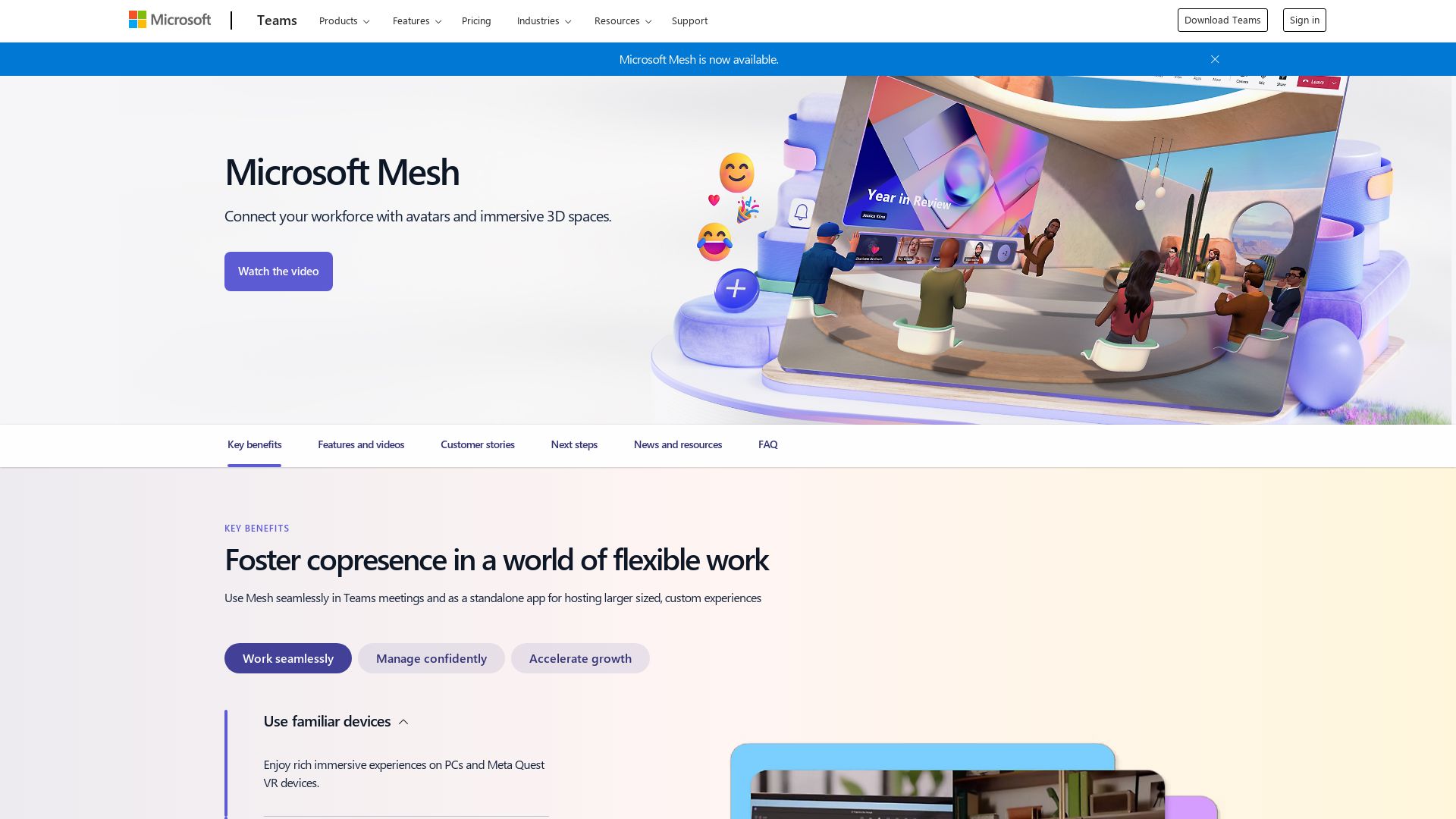
Microsoft Mesh is a transformative tech tool delivering a three-dimensional immersive experience. It presents the evolution of digital engagement, shifting the narrative from audio and video to spatial interaction, thereby fostering meaningful work relationships and enabling the distributed workforce to connect in the immersive space.
Microsoft Mesh Top Features
- Fosters connections in shared spaces for meaningful work relationships, thereby addressing the challenge of relationship building acknowledged by 43% of leaders in Microsoft’s Work Trend Index report.
- Built on Azure for robust cloud computing, offering developers AI-powered tools for avatars, session management, spatial rendering, synchronizations, and holoportation.
- Facilitates the transformation of 2D meetings into 3D immersive experiences, promoting authentic human interactions.
- Available on a variety of devices like HoloLens 2, VR headsets, PCs and is set to be integrated with Teams for futuristic mixed reality group meetings.
| Unique attributes | Add-on functionalities |
|---|---|
| Spatial interaction, co-presence, immersion | Immersive presence, spatial maps, holographic rendering, multiuser sync |
| Photorealistic 3D user representation via holoportation | Unreal, Babylon, React Native (Coming Soon) |
Microsoft Mesh Limitations
- Currently, it might be challenging for those not proficient with augmented reality or who lack high-tech device access.
- Realistic user representation and immersive spaces hinge heavily on data-heavy holoportation.
Microsoft Mesh Pricing
Information on specific pricing was not provided. It may be subject to factors such as business size, user count, and features utilized. For accurate pricing, contact Microsoft directly.
Microsoft Mesh Use Cases
Use case 1 – Remote Work
Microsoft Mesh enables the distributed workforce to connect in a 3D immersive space, overcoming geographical barriers. Enables effortless collaboration and conversation among professionals from various global offices via 3D holograms and real-time interaction.
Use case 2 – Business Needs
Businesses can leverage Microsoft Mesh to create custom immersive spaces that cater to specific business needs, enhancing productivity and fostering meaningful relationships.
Use case 3 – Entertainment
Microsoft Mesh offers unique entertainment experiences like live concerts or performances from remote locations through a project called Hanai World, transcending geographical limitations.
Nvidia Omniverse
If the Facebook Metaverse ever decides to find a sparring partner in a tech duel, it might just face a stiff upper-circuit challenge from Nvidia Omniverse. This unsung hero, much like the unnamed sidekick in a high-octane action flick, is a Universal Scene Description (OpenUSD)-based 3D computing platform. It marries the marvels of NVIDIA RTX technology with USD for unfathomable scalability and transforms convoluted 3D workflows into a canter.
Nvidia Omniverse Top Features
- An all-embracing platform that allows teams to weave magic and craft customizable 3D pipelines.
- Three licenses to choose from: standard, Omniverse Enterprise and Omniverse Cloud, desirable like the three Musketeers of technology.
- Standard license aimed at developers and individual artists – Easy on the pocket, but pays rich dividends with free access to Omniverse for OpenUSD, 3D workflows.
- A tent for those who weave tech dreams – Developers can build Omniverse SDK-based apps, extensions, providing monetization through the Omniverse platform.
- Always open for a pit stop, Omniverse is built on OpenUSD, nurturing the growth of interconnected extensions and apps. Plus, it’s ever so hospitable and extendable with the Omniverse Exchange Publishing Portal.
| Feature | Benefit |
| Extensive OpenUSD Developer Resources | Crafted code? Prepare to be spoiled with resources and services. |
| 20 years of NVIDIA AI, rendering and simulation technology | It’s like having tech from ‘The Matrix’ at your fingertips. |
| Supports Python or C++ based extensions | Leaves no stone unturned or no coder out in the cold. |
Nvidia Omniverse Limitations
- The cloud service platform may still be a twinkle in the teething phase.
- Enterprises might feel a pinch, as Omniverse Enterprise pricing starts from $9,000 p.a.
- Some connectors, like those for Houdini, Blender, Character Creator and more are still on the upcoming list.
Nvidia Omniverse Pricing
If you’re as individual as an artist, the Omniverse platform remains free with some base functionalities, while the big boys in the tech game might have to shell out $9,000 a year for Omniverse Enterprise.
Nvidia Omniverse Use Cases
Use Case 1: 3D Developers
Are you a 3D developer who dreams in code? Nvidia Omniverse serves as a remarkable tool to weave your dreams into reality.
Use Case 2: Large Organizations
If you’re a large organization with scads of data in need of visualization, Nvidia Omniverse stands ready, with its armory of DCC connection plugins, RTX Virtual Workstation and more.
Use Case 3: Artists
And for individual artists who want to play around with code, Nvidia Omniverse opens the world of 3D tech with free access to Omniverse. Because who said fantasy couldn’t have a bit of reality.
Unreal Engine
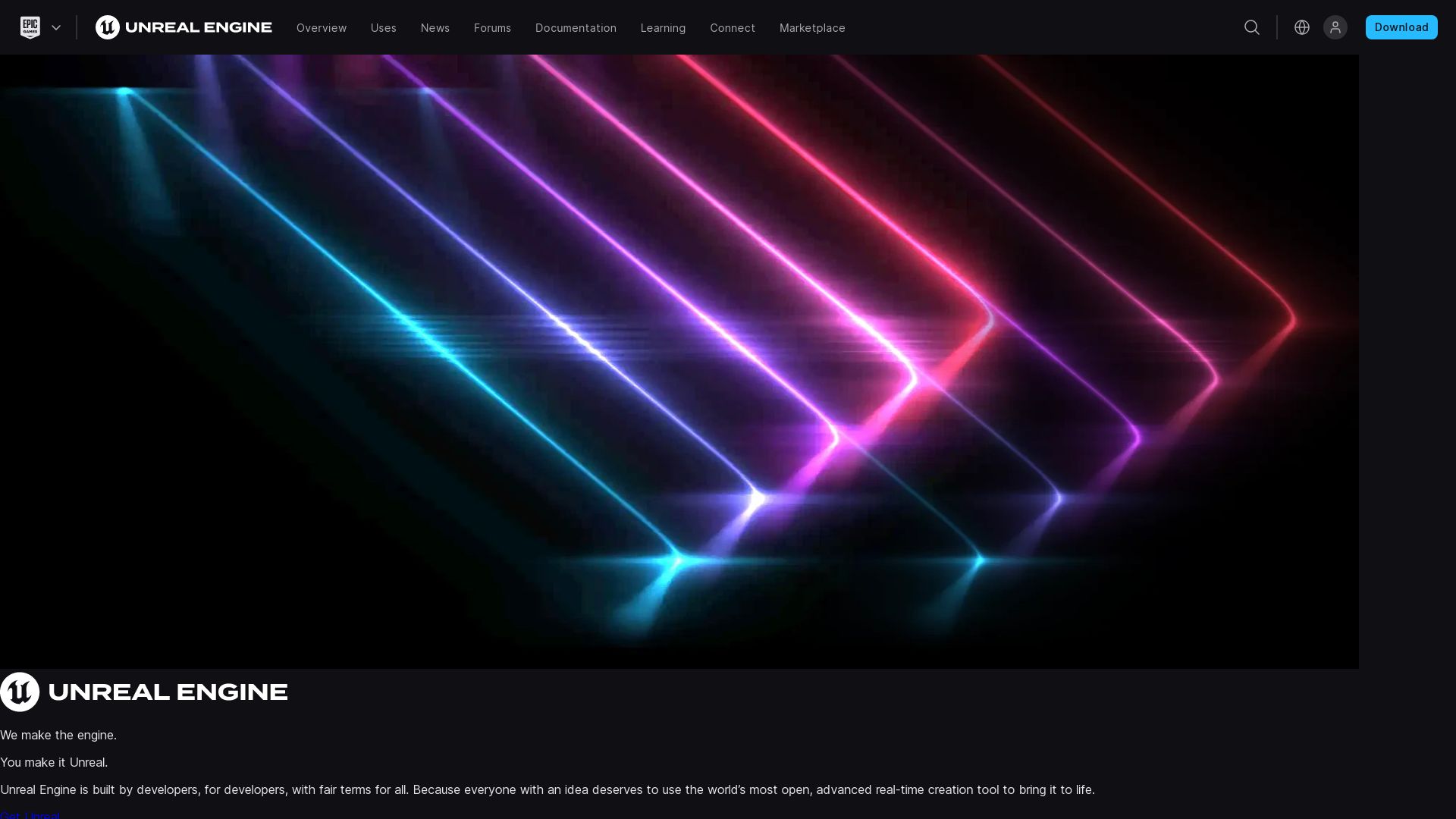
Developed by Epic Games, the Unreal Engine is a versatile 3D computer graphics engine. Initially designed for first-person shooters, it has grown over time, becoming a key tool in many fields, including film, television, virtual reality, and more.
Unreal Engine Top Features
- Wide platform support: It supports desktop, mobile, console, and virtual reality platforms.
- UnrealEd Level Editor: It comes with a level editor that enables real-time constructive solid geometry operations.
- Mod-friendly: Unreal Engine 3 opened up new possibilities for modders.
- UDK (Unreal Development Kit): A free version of UE3’s SDK, allowing developers to create iOS games and apps.
- Marketplace: Users can sell their creations or purchase from other developers, with an 88% share of revenue going to the content creators.
| Feature | Details |
|---|---|
| Latest Version | Unreal Engine 5 (UE5), released in April 2022. |
| Language | Written in C++, it allows developers to implement complex game mechanisms. |
| Royalty Model | Charges 5% of revenues over USD 1 million, waived for games published on the Epic Games Store. |
Unreal Engine Limitations
- Learning curve: As UE is developed with C++, those unfamiliar with this programming language may find the learning curve steep.
- Royalty model: Despite its benefits, a drawback can be the 5% royalty charged for revenues above USD 1 million (except games published on the Epic Games Store).
Unreal Engine Pricing
Unreal Engine is offered free for all users, charging 5% of the revenue for products that garner more than $3,000 per quarter. However, it waives this charge for games published on the Epic Games Store. It also decided to make the engine free for schools and universities.
Unreal Engine Use Cases
Use case 1: Game Development
With its comprehensive toolset and support for C++, Unreal Engine is particularly favored by game developers seeking to create immersive experiences across multiple platforms.
Use case 2: Educational Institutions
Harnessing Unreal Engine’s potential, schools and universities can incorporate it into their curriculum, providing students with hands-on experience creating 3D graphics and applications.
Use case 3: Content Creators
Content creators can leverage the Unreal Engine Marketplace to sell their creations, receiving 88% of the revenue generated.
Unreal Engine 5
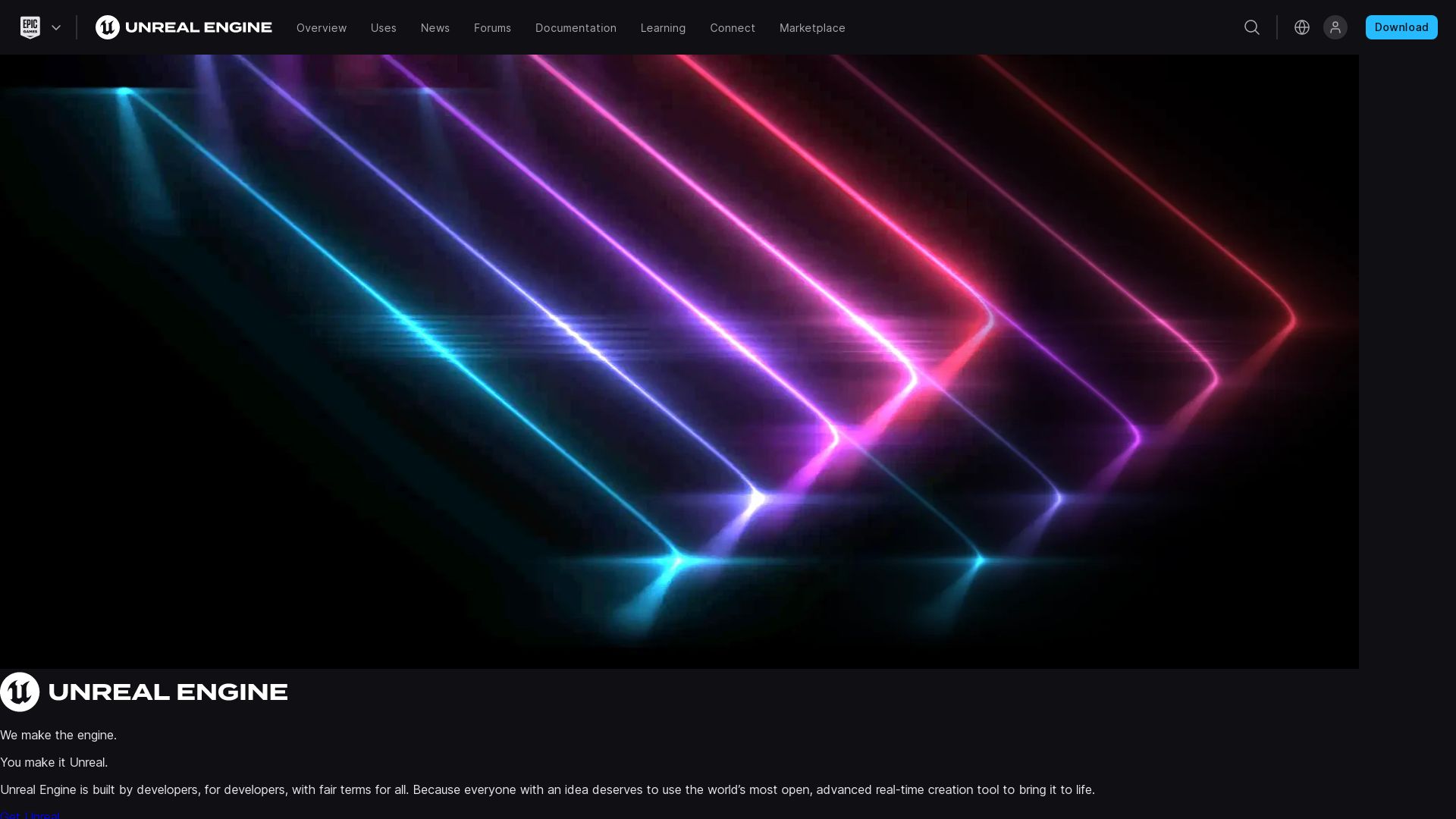
Engineered by Epic Games, Unreal Engine 5 (UE5) is geared towards next-gen real-time 3D content creation. With its advanced toolset, it’s both ARM and beneficial for creators aspiring to build expansive, detail rich virtual worlds.
Unreal Engine 5 Top Features
- Nanite: A state-of-the-art system that supports the real-time processing of multi-million-polygon meshes, enabling the creation of intricate and feature-rich environments.
- Lumen: An all-inclusive dynamic global illumination and reflections solution, allowing immediate adaptation to changes in light or geometry.
- Temporaly Super Resolution (TSR): An inbuilt upsampling system enabling low-res rendering with hi-res pixel-fidelity, supporting performance at 60 fps.
- World Partition: An innovative feature that facilitates team workflow by dividing the world into a grid and streaming only necessary cells.
- Control Rig: An inherent animation authoring toolkit that significantly enhances the creation process.
| Feature | Description |
|---|---|
| Development Languages | UE5 supports C++, leading to high portability. |
| Free Sample Projects | UE5 offers free sample projects for users to explore and learn. |
| Source code Availability | Source code is shared on Github, commercial use based on royalty model. |
Unreal Engine 5 Downsides
- Development can be expensive, with costs ranging from 35K-85K approx.
- A royalty fee of 5% is charged when lifetime gross revenue exceeds $1 million, though this is waived for games launched on Epic Games Store.
Unreal Engine 5 Pricing
The engine is available freely but Epic charges a royalty fee. After games generate $1 million in revenue, the fee begins at 5% but this is relinquished if they’re published on the Epic Games Store.
Unreal Engine 5 Use Cases
Use case 1: Gaming Industry
Due to its advanced and comprehensive features like Nanite and Lumen, UE5 is ideal for creating immersive gaming experiences with high detail and realism.
Use case 2: VR/AR Applications
UE5’s compatibility with a wide range of platforms including VR and AR makes it a suited candidate for building engaging virtual and augmented reality applications.
Use case 3: Animation Creation
With its inbuilt Control Rig feature, UE5 significantly streamlines the process of animation creation, drastically reducing round-tripping in the authoring process.
Unity

Launched in 2005, Unity has forged its name as a leading cross-platform game development engine, deeply rooted in the creation of 3D and 2D games. It empowers game enthusiasts extending from solo mobile developers to established entities in the industry by offering tools to create an extensive array of applications, from Augmented Reality to 3D simulations.
Unity Top Features
- Cross-platform compatibility for diverse operating systems including Android and iOS platforms.
- Featuring a rich asset store with intricate pre-designed textures and features.
- Multiple coding languagesbolstering its flexibility including BOO script, Javascript, and C#.
- An active developer community igniting synergy through collective brainstorming, problem-solving, and valuable feedback for system advancement.
- Commitment to evolvement, resulting in continuous tech-modernisations for enhancing user-friendliness, compatibility, and immersive visual experiences.
| Feature | Benefits |
| Cross-platform Engine | Aids developers in creating games that can easily reach a wide range of platforms, thus enlarging audience base. |
| Asset Store | Accelerates game development by providing ready-to-use assets, enabling developers to focus on core gameplay mechanics. |
| Active Community | Offers collaborative solutions and assistance to game development challenges. |
Unity Disadvantages
- Recent pricing redesign has raised concerns for the future financial sustainability of indie, solo, and mobile developers.
- Unity’s sudden changes and retroactive fees have eroded the longstanding trust between the company and its users.
- The establishment of ‘per-install fees’ and differential pricing based on geographic markets raised apprehensions amongst developers.
Unity Pricing
The new pricing model, set to be effective from January 1, 2024, fundamentally alters the financial dynamics for developers. Unity imposes a fee for each game installation, a feature potentially consequential for indie developers. However, the company has assured that developers will not bear the install fee until their game reaches $200,000 in revenue and surpasses 200,000 installations. Unity no longer offers Unity Plus subscription tier, albeit retaining their free and Pro versions.
Unity Use Cases
Use case 1: Mobile Game Development
Unity’s cross-platform nature makes it ideal for mobile game developers who aim to publish their games across diverse mobile operating systems.
Use case 2: AR/VR Game Development
Offering robust tools for developing AR/VR experiences, Unity is a valuable tool for developers eager to explore these burgeoning markets.
Use case 3: Indie Game Developers
With its rich resource store and active community, Unity avails an expansive design playground for indie developers to brainstorm and implement innovative game designs.
Unity Reflect

Unity Reflect, born from a partnership with Autodesk, pioneers the seamless integration of CAD/BIM data with Unity’s robust engine, offering two versatile suites: Reflect Review and Reflect Develop.
Unity Reflect Top Features
- Unity Engine Integration: Links CAD/BIM to Unity’s powerful engine.
- Review Version: Facilitates design iteration, empowers AR/VR experiences, and links to multiple projects. Exhibits 3D projects across various platforms.
- Develop Version: Allows custom application development with open-sourced apps and APIs for BIM data import/streaming.
- Multi-device Support: Ensures optimal performance across diverse devices.
- Real-time Changes: Implements changes in real-time with Autodesk BIM 360/Navisworks/SketchUp/Rhino plugins.
| Cloud-hosted Servers | Offers on-premises or cloud-hosted servers for enhanced accessibility. |
| API & Plugin Access (Develop version) | Furnishes users with APIs and a Reflect Editor project/plugin. |
| AR/VR Experiences | Deploys immersive AR/VR options in the Review viewer. |
Unity Reflect Limitations
- Limited to Autodesk Revit, Navisworks, BIM 360, SketchUp, and Rhino plugins.
- No current support for Microsoft HoloLens.
- Unity Reflect licenses are user-specific, limiting anonymous usage.
Unity Reflect Pricing
Unity Reflect offers varied pricing options: Reflect Review at $690/year and Reflect Collaborate at $149/year.
Unity Reflect Use Cases
Use case 1: AEC Firms
AEC firms can leverage Unity Reflect to build custom applications, review designs in 3D, and manage projects in real-time.
Use case 2: Software Developers
Software developers can utilize Unity Reflect for custom app development using open-sourced apps and APIs.
Use case 3: Multi-disciplinary Collaborative Teams
Teams can employ Unity Reflect for simplified collaboration, fueled by its cloud hosting and multi-user collaborative features.
Blender
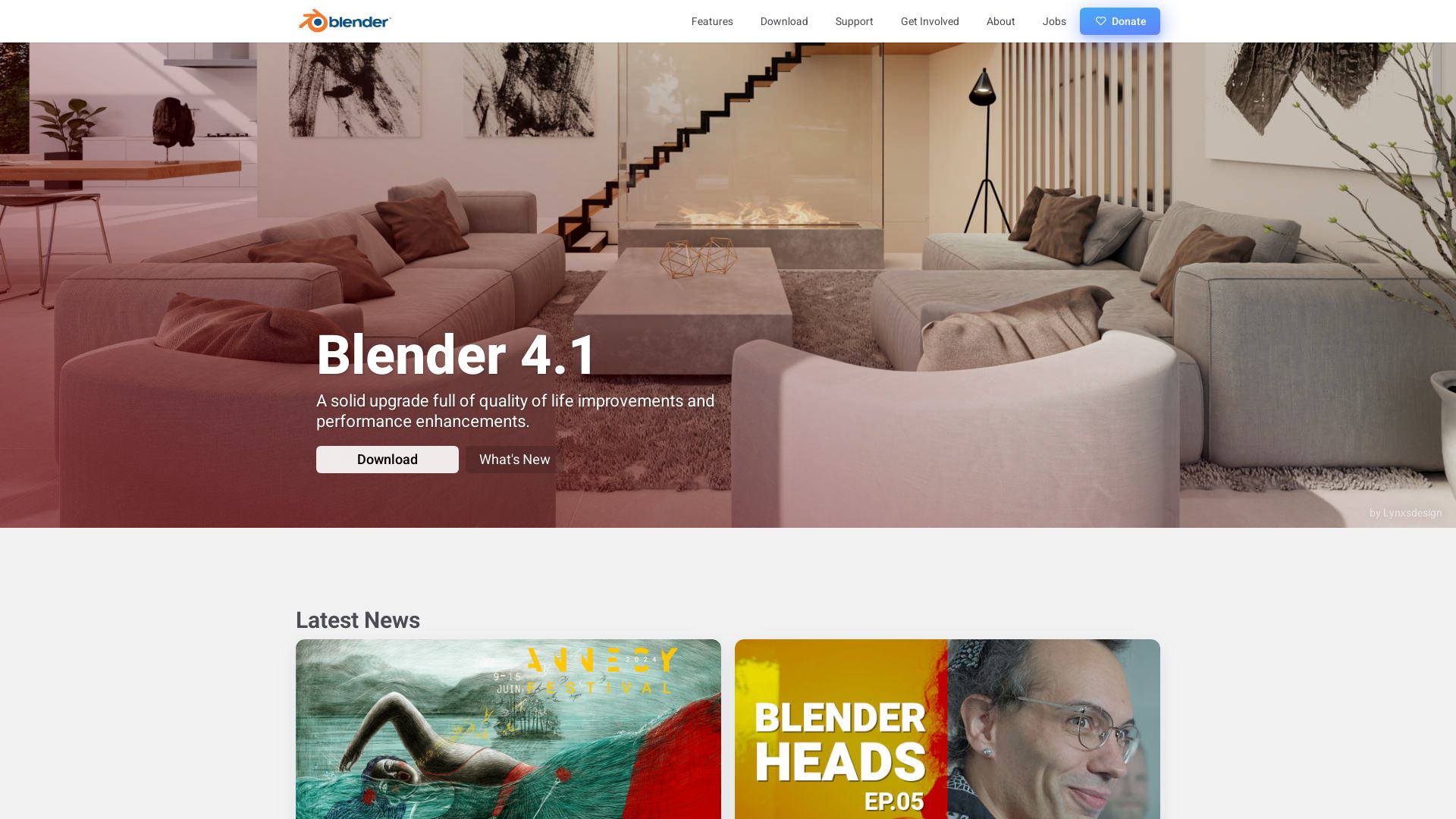
Roll out the red carpet for Blender, a 3D computer graphics software toolset that truly shakes the world with its open-source accessibility and unparalleled versatility. Launched by the Dutch animation studio NeoGeo, this eminent platform has evolved to become a haven for arts, entertainment, and technology purists since its inception in 1994.
Blender Top Features
- 3D modeling and texturing: Envision, actualize, and refine your 3D masterpieces with Blender’s comprehensive tool set.
- Digital drawing and raster graphics editing: Cultivate your creativity with precision instruments for the digital arts.
- Rigging, skinning, and simulation: From fluid flows to the physics of soft bodies, Blender makes the imagined world come alive.
- Sculpting, animation, and rendering: Grasp the reins of pixel and polygon to shape artefacts of stirring beauty.
| Unique Feature | Explanation |
|---|---|
| Match Moving | A groundbreaking feature helping artists to integrate 3D elements into 2D footage. |
| Open-sourced | Community-driven development fostering continuous advancement and sharing ethos. |
| Extensive support of 3D file formats | No boundaries to the creative exchange with the support of numerous 3D file formats including Alembic, OBJ and FBX. |
Blender Limitations
- Blender Game Engine: With the depreciation in 2.8 release, game development might find certain constraints.
- Blender Internal: Removed since the 2.80 release, users have to adjust to the Eevee renderer.
Blender Pricing
No golden keyhole here. Step into Blender’s richly adorned doors for free, thanks to its open-source licensing.
Blender Use Cases
Use Case 1: Animated Films
No matter if it’s a Disney-dream or a indie heart-beat, Blender cradles your visions from storyboard to the silver screen.
Use Case 2: Visual Effects
Marvel at the possibilities when creativity meets technology. Blend magic into ‘reality’ with Blender’s plethora of effects tools.
Use Case 3: 3D Modeling for VR
Create, transform, innovate. Blender is the mastercraft tool for 3D-printed models or interactive 3D applications in the virtual reality domain.
AltspaceVR
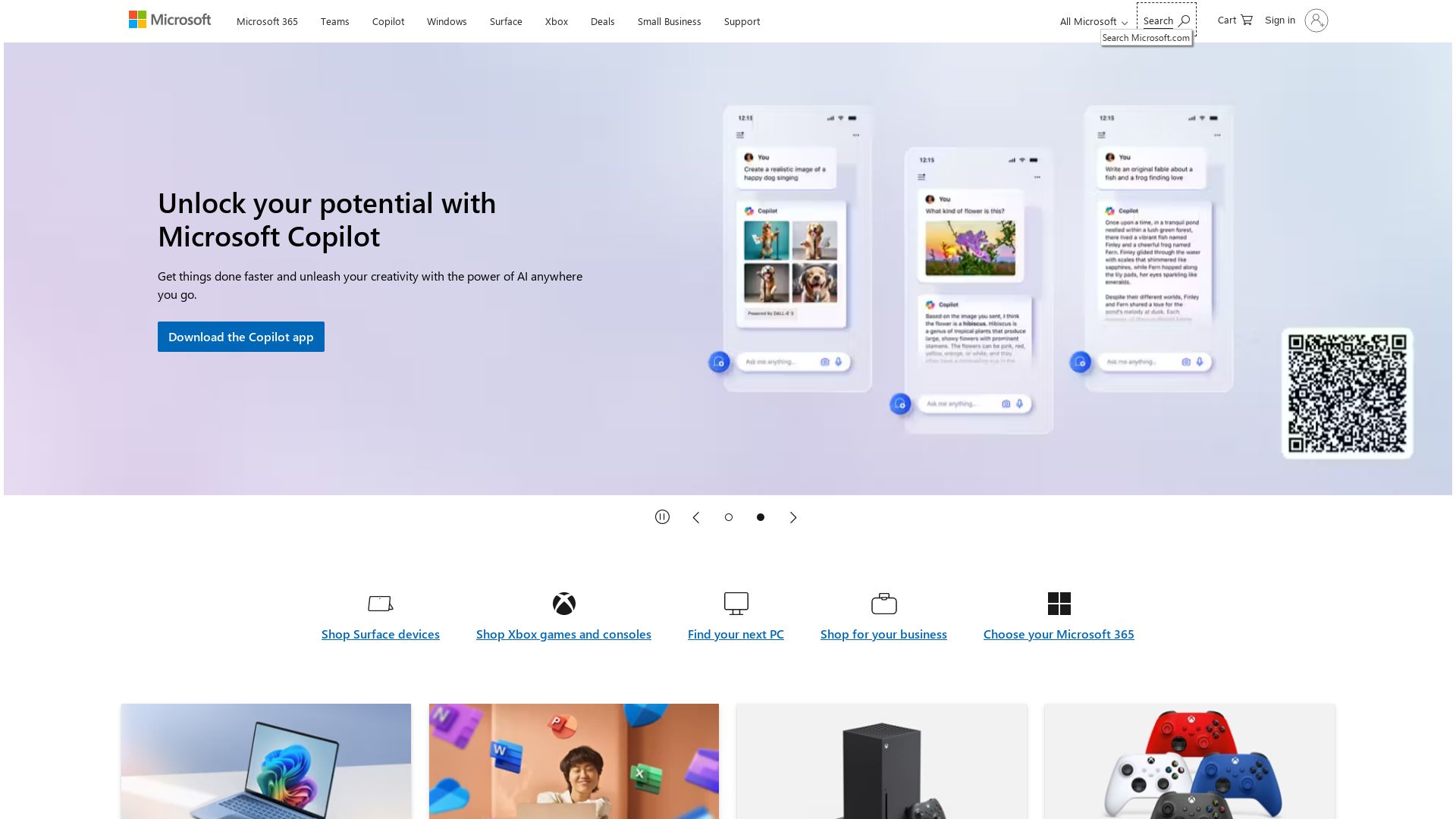
Launched in 2013, AltspaceVR is a social VR platform acquired by Microsoft in 2017. Frequently used for first time VR experiences, it features an accessible, user-friendly interface that fosters social interactions.
AltspaceVR Top Features
- Microsoft Mesh integration: Allows VR avatars to populate real-world or digitally replicated spaces.
- Avatar Customization: Enhanced capabilities for personalized avatars.
- Social Events: Provision of live comedy shows, workshops, religious studies, and more.
- Microsoft Ecosystem Integration: seamless access to Minecraft, Xbox Live, and Office 365.
| Feature | Description |
| Control System | Varies dependant on desktop or VR; the latter offers hand and head tracking. |
| Event Creation | Based on user experience, with templates available for new users. |
| Compatible Platforms | Oculus Rift, Samsung Gear VR, and desktop PC. |
AltspaceVR Limitations
- Limited control system favoring ease of navigation over complexity.
- No in-app payments or email-facilitated communication.
- Closure announced for March 10, 2023.
AltspaceVR Pricing
As a free platform, AltspaceVR requires no in-app payments, making it a no-cost solution.
AltspaceVR Use Cases
Use case 1
AltspaceVR serves as an excellent tool for online social gatherings. From live comedy shows to discussions and workshops, it brings people together despite geographical barriers.
Use case 2
An avatar-based social network, it affords users unique ways of self-expression and interaction in virtual reality.
Use case 3
AltspaceVR is also used by brands and agencies for building 3D worlds, opening potentials for unique marketing experiences.
Tiffany Brise
Content writer @ Aircada, patiently awaiting a consumer AR headset that doesn’t suck.



